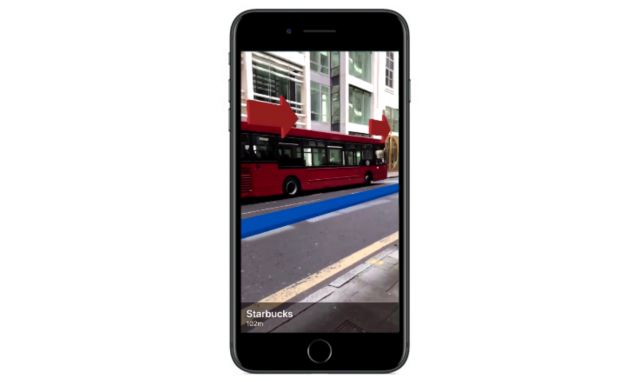What’s that building in the distance? Where’s the nearest Starbucks? How do I get to there from here? These are questions you’d likely find answers to in your smartphone’s map application—but with Apple’s ARKit, one developer showed it could be even easier with a recently revealed project that demonstrates the practical application of turn-by-turn directions and basic landmark-based orientation displayed in augmented reality.
Created by London-based iOS developer Andrew Hart, the project was built using two Apple tools; ARKit and Core Location, the latter of which provides devs access to data from the phone’s onboard hardware including Wi-Fi, GPS, Bluetooth, magnetometer, barometer, and cellular hardware so it can be used to gather relevant positioning data. Integrated it into a map project, Hart was able to demonstrate landmark orientation and even turn-by-turn directions that appear with the click of a single button.
Hart says he’ll be publishing the project on GitHub soon, and that he’d like to make sure the experimental app is in “a solid place before opening it up.”
Apple ARKit was first revealed at the company’s annual Worldwide Developer Conference (WWDC), and works on newer iPhone and iPads that have the ability to opt into the iOS 11 beta. While Apple is working with third-parties such as IKEA, Lego, and Niantic to build apps using ARKit, the company also released the tool for general use so enterprising developers can start building AR apps today—many of them going viral on the Internet like AR inter-dimensional portals and a project that built positional tracking for a VR headset using ARKit.
There’s no telling what Apple has up its sleeves hardware-wise, whether it’s simply a new iPhone with ARKit integrated at its core, or an AR headset that some patents would suggest is currently in the works. In the meantime though, we’ll be casting wistful stares at the iOS developers of the world to see what they come up with next.


